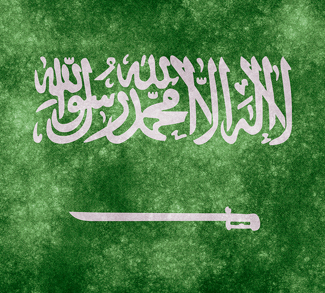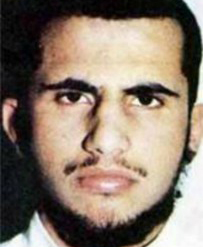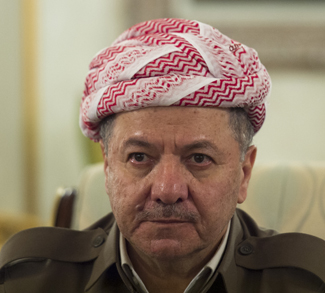Saudi Arabia – a state established by an 18th century political-religious alliance between Muhammad bin Saud, founder of the House of Saud, and Sheikh Mohammad bin Abdel-Wahhab, the forefather of Wahhabism – continues to be somewhat of an anomaly in the Middle East.
On the one hand, the Saudi state seeks to stamp out Islamic extremism both within the Kingdom and near its borders. Most recently, the Saudi regime declared the Muslim Brotherhood a terrorist organization. In south Yemen, Saudi troops are reinforcing Yemeni forces fighting against al-Qaeda in the Arabian Peninsula (AQAP), and the Saudi authorities have been supporters of the US struggle against global jihadi movements – in word if not always deed.
Farther away, however, the Saudi regime has supported fanatical Salafists in Syria, such as Jaysh al-Islam (JAI), which seeks to depose Bashar al-Assad. For years, Saudi officials turned a blind eye to wealthy Saudi donors who bankrolled Sunni insurgents fighting against the Assad and Maliki governments. This untenable dual policy of backing jihad outside the Kingdom but fighting it at home when it threatens the royal family is now backfiring. While there is no direct evidence that the Saudi state funded Islamic State or Jabhat al-Nusra – notwithstanding any covert support – Riyadh certainly backed JAI and other Islamic rebel groups, and ISIS (now Islamic State) often ended up getting a hold of these weapons and funds.
Riyadh’s strategy in the Middle East has been to empower groups and governments that act as a bulwark against Iranian influence. As such, it has deployed troops to Bahrain to save the al-Khalifa monarchy from an uprising by the tiny island kingdom’s “Iranian-agitated” Shia majority; it fights alongside the Yemeni government to crush a so-called Iran-backed Houthi rebellion in Yemen’s north; it backs Saad Hariri’s anti-Syrian March 14 Alliance that calls for pro-Iranian Hezbollah’s disarmament; it supports various rebel groups fighting to topple Assad and his secular regime; and it extends its patronage to Sunni tribal sheikhs in Iraq’s Anbar Province to counter Iranian influence over Baghdad.
The Saudis abhor the Assad regime’s alliance with the Islamic Republic of Iran and view Iraq’s Shia-dominated government as an Iranian puppet regime. Riyadh also does not want a strong, oil-producing Iraq on its border with whom it must compete with. Thus Riyadh has no qualms in seeing the rule of Assad and Shia-dominated Baghdad challenged by insurgents.
But now that Islamic State is on Saudi Arabia’s doorstep and has morphed into a self-declared caliphate with the financial means to significantly destabilize the Kingdom, Riyadh is no longer comfortable tolerating the flow of money and arms to Islamic State and its ilk in Iraq and Syria. The recognition that Saudi Arabia has failed in Syria was likely what led to the dismissal of former head of Saudi intelligence and chief architect of Riyadh’s Syria policy, Prince Bandar bin Sultan.
Islamic State is no longer a disorganized al-Qaeda offshoot either. It now possesses advanced weaponry, controls swathes of Syria and Iraq, and has a disturbingly genocidal outlook in its bid to impose a strict, puritanical version of sharia law. It is also not a reliable proxy force that can be pushed and swayed by Riyadh. The group no longer relies heavily on donations to sustain itself. Its foreign donations now pale in comparison to its ‘internal’ revenue streams, such as oil smuggling, robbery, extortion, and ransom from kidnappings in Iraq and Syria.
The Kingdom’s clerics and ruling family were naturally perturbed to see Islamic State attempting to restore the caliphate. Wahhabis believe that only they have the legitimate authority to lead a caliphate if it were ever restored. By declaring its own caliphate, Islamic State has openly challenged the legitimacy of the House of Saud and contested its leadership of Sunni Muslims.
More recently, the Saudi Interior Ministry arrested 88 people on suspicion of terrorism, warning of an imminent ISIS attack on the West unless more is done to stop the group.
Just weeks ago, Saudi Arabia donated $100 million to the UN Counterterrorism Centre in New York, reflecting Riyadh’s discomfort with a nascent caliphate so close to its borders. Fearing blowback for its policy in Syria, the Kingdom is sounding the alarm and clamping down on jihadists operating on Saudi territory. Most of all, Riyadh is concerned that if Islamic State advances south and pushes beyond Iraq’s southern border, Mecca and Medina will be next on its radar.
Last February, Saudi King Abdullah issued a royal decree punishing Saudi citizens for fighting abroad, and a month later released a list of terrorist groups that Saudis were barred from financing or supporting, among them ISIS and Jabhat al-Nusra. Many of these jihadists fighting abroad are Saudi nationals and the ruling family is afraid that they might return to wreak havoc, just as Saudi jihadists returning from Afghanistan did a decade ago.
In May, Saudi Arabia moved in on an ISIS-linked cell within the country that allegedly planned to launch attacks on Saudi soil. More recently, the Saudi Interior Ministry arrested 88 people on suspicion of terrorism, warning of an imminent ISIS attack on the West unless more is done to stop the group.
This tenuous domestic and geopolitical outlook is in part of Saudi Arabia’s own making, however. Riyadh’s policies of the past decade have served to compound the rise of transnational jihad and destabilize the wider region.
In a bid to counter the Iranian revolution, the Saudi state, in concert with private Saudi charities, intensified its funding of conservative Islamic seminaries (madrassas) in the 1980s and 1990s, many of which were breeding grounds for extremism. In coordination with the CIA, Riyadh supported the Mujahedeen against the Soviet occupation of Afghanistan (1979-1989) and, in so doing, created its own geopolitical Frankenstein. For decades, Saudi-funded Wahhabi madrassas in places like Pakistan and Afghanistan churned out radicalized men eager to wage global jihad. Under the Saudi-backed Taliban regime, al-Qaeda enjoyed a sanctuary where it used training camps in Afghanistan to plan the Sept. 11, 2011 attacks.
In the Kingdom itself, state-backed clerics often teach an intolerant and puritanical form of Islam that regards only ultra-orthodox Salafists as true Muslims and only Wahhabis as real Salafists, designating all others as misguided or apostates. Even the pact between the House of Saud and the Wahhabi religious elite, in theory, requires the King to please the Council of Senior Scholars, the senior ulama, by propagating Wahhabism and demonstrating absolute loyalty to the creed.
In 2012, the Grand Mufti of Saudi Arabia, Abdul Aziz al-Sheikh, decreed that, “All churches in the Arabian Peninsula must be destroyed.” As the top religious authority in Saudi Arabia, Abdul Aziz has a history of vilifying non-Wahhabis. The Saudi religious establishment regularly derides Shias as munafiqin (false Muslims), kuffar (infidels) and rafidah (rejectionists). The state accuses Saudi Shias, most of who live in the oil-rich Eastern Province, of collaborating with Iran to undermine the Saudi Kingdom. Saudi textbooks are filled with propaganda against ‘unbelievers,’ including Christians, Jews, Shias, Sufis, and even Sunni Muslims who do not follow the Wahhabi creed. The propagation of this ideology, especially in Islamic seminaries, has in part contributed to the radicalization of Muslims in Saudi Arabia and abroad.
Interestingly, Saudi Arabia’s history of supporting jihadist organizations, like the anti-Soviet Mujahedeen in Afghanistan and Jaysh al-Islam in Syria today, is consistent with its Wahhabi ideology. Both Islamic State’s Salafi-jihadism and Saudi Wahhabism share an aversion to democracy, a hatred of Iran and the Shia, and a puritanical interpretation of Islam with a takfiri slant (i.e. declaring others as apostates under sharia). The theological difference between the two ideologies is a matter of degrees. Politically, however, the Saudi elite and Islamic State differ greatly; the former rejects the group’s attempt to restore the caliphate and the latter considers the House of Saud as illegitimate. Above all else, Saudi rulers seeks to uphold the absolute power of the ruling family, which is perceivably threatened by the self-declared caliphate of the Islamic State.
Yet for years, Riyadh was willing to tolerate the growing strength of ISIS and other Salafists in Syria and Iraq, as long as they weakened the pro-Iranian regimes of Assad and Maliki.
It is plausible that Prince Bandar reached out to jihadist groups like ISIS and Jabhat al-Nusra in an effort to bring them under Saudi tutelage. What is certain is that he used all the tools at his disposal to topple Assad, and when that failed he scorned the Obama administration for failing to act decisively against the Syrian leader.
In many ways, the Wahhabi state has its own policies to blame for the recent wave of disastrous developments in the region.




